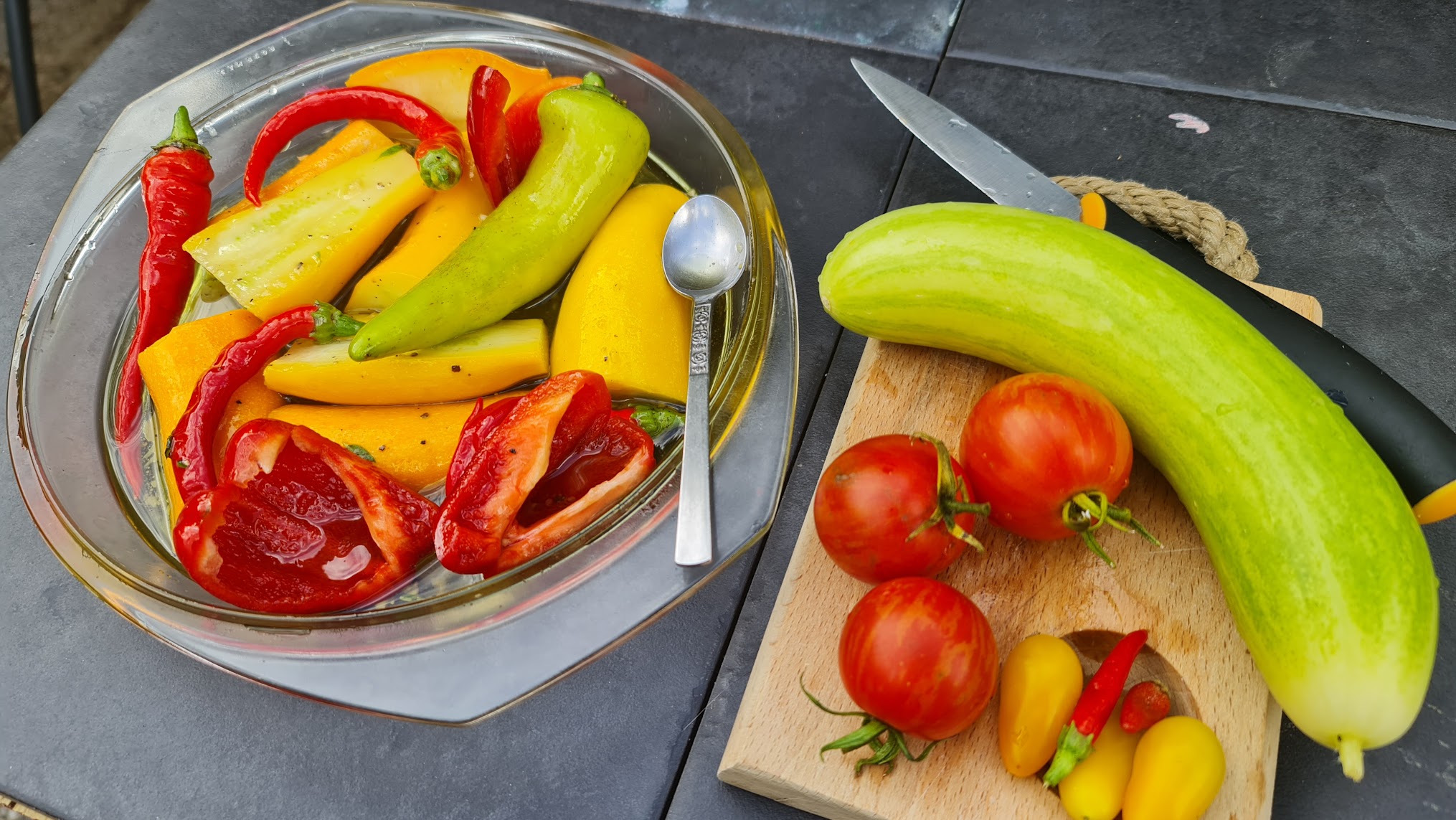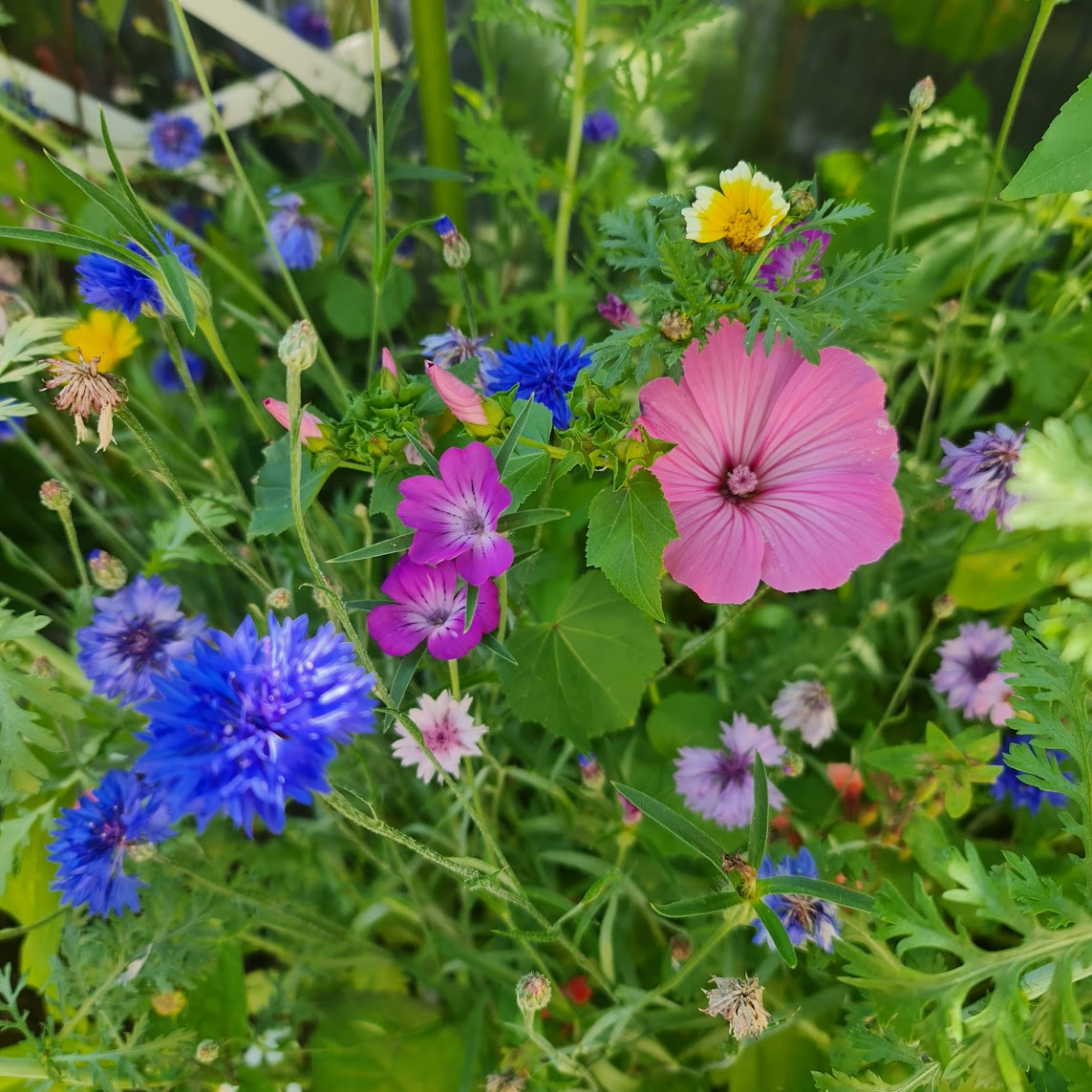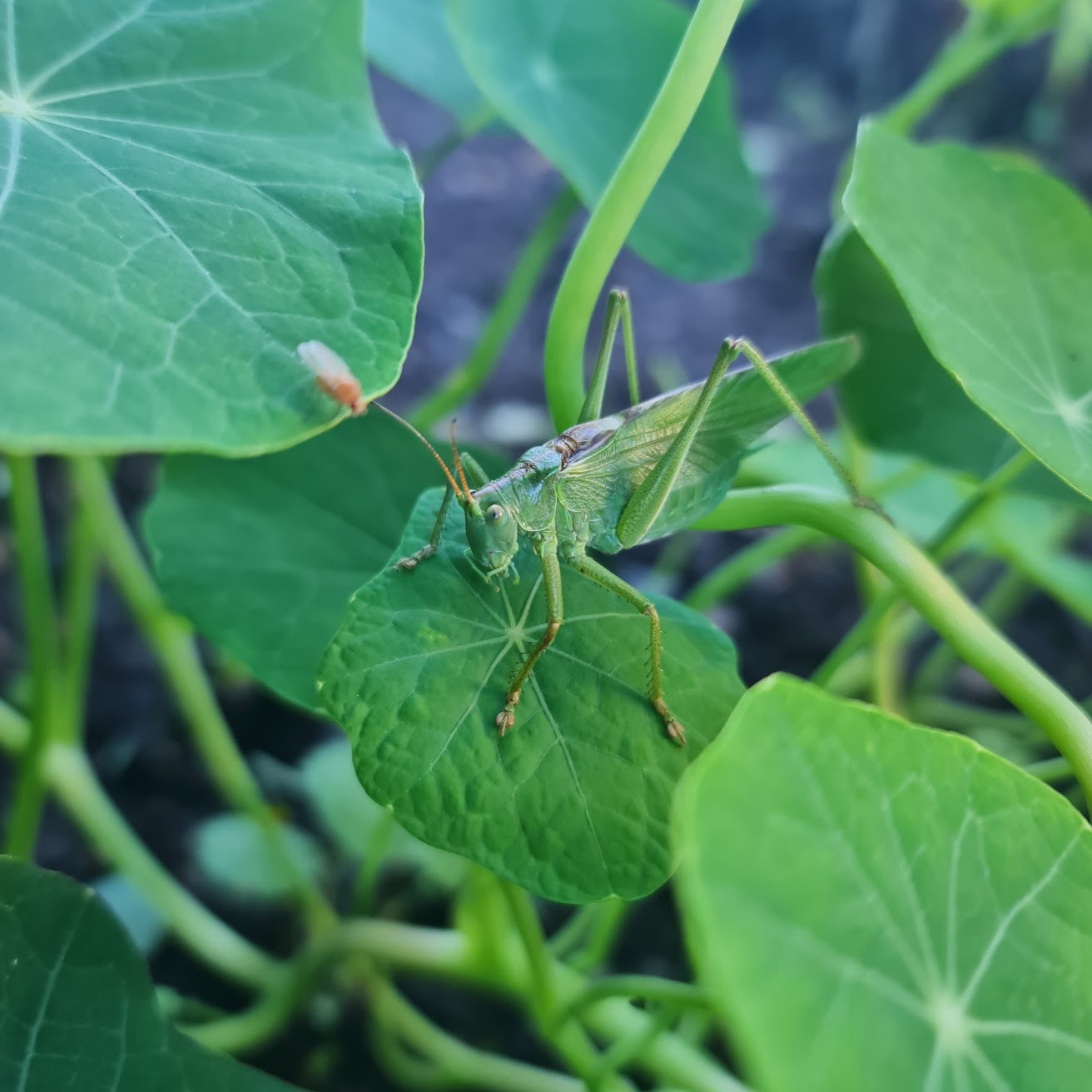Mio's top crops + tips & tricks
January 7, 2025Not sure where or how to start your gardening journey? Here is a selection of some of my favorite crops, together with some tips and tricks to succeed from planting to harvest! I am continuously learning more about each plant and many more, so expect some gaps in my knowledge. Remember, expecting perfection is how you scare away new hobbyists, so don’t be too hard on yourself if your plants aren’t ideal! 💕
1. Vegetables (+ fruit if you wanna be pedantic)
🍅 Tomatoes
Tomatoes are an awesome beginner crop and one of my favorites. Tomato plants are hardy and resilient, producing for a long time. The typical tomato varieties get quite tall and heavy during the fruiting season and need to be supported. Either acquire a bamboo pole or tie your tomatoes to a trellis.
Tomatoes can root from their stems! Cut off the lower leaves and bury them deeper at every transplant for a stronger, hardier plant. Tomatoes are equally simple to propagate cuttings from. Place a cutting (one of the branches) in a glass of water, once the roots develop, pot it up for a brand-new tomato!
🌶️ Chili & Bell Peppers
Chili peppers are slow-growing but reliable crops. It’s very fun to grow varieties you could never find in stores! With some patience, you will find yourself having tons of peppers. Depending on the type of pepper you buy, you may have to support them with a pole.
Chili stems are similar to tomatoes, bury them for a thicker plant! Prune early flowers on your plants to let them prioritize new growth—supporting more peppers later.
🍈 Cucumbers & Melons
Cucumbers and melons are part of the same family, meaning that you can expect them to behave about the same. These thirsty plants are a little more complicated and brittle than tomatoes, but produce much more fruit much earlier. Melons can be a little more stingy, as they require much more space and nutrition compared to cucumbers. These are both climbing or vining plants, so prepare a trellis or poles. Cucumbers have sensitive stems, so absolutely do not bury these. Keep them sunny and wet with plenty of airflow and you will have a beautiful cucumber.
Some melons benefit from hand pollination. Take a normal painter's brush and brush the center of the male and female flowers. The female—your future melon—has a small bump below the flowering head.

🥒 Squash/Zucchini/Courgettes
Squash is infamous in the gardening community due to how much fruit they produce. They are also very easy to grow! Squash is an amazingly fast grower, giving you a big, beautiful plant in only a couple of weeks. They are therefore perfect to sow directly where you want them, but keep in mind that the plant gets wide, loving to take up the space of other crops in the vicinity! Squash loves a good strong fertilizer, but they seem to keep producing whatever it is you do. Pick them frequently to motivate more crops!
Companion plant squash together with beans and corn—they are great buddies!
🌿 Beans & Peas
Beans and peas grow with impressive speed and force, and many varieties have beautiful flowers. Surprisingly these two veggies are not two peas in a pod and should not be planted in the same area—but you can still expect them to behave about the same. Prepare for them to get very tall and large, so provide them with a proper trellis.
Beans may not be the tastiest plant for some, but they are one of the most nutritious crops you can grow at home. They are also excellent for freezing.
🥔 Potatoes
Potatoes are a miracle crop in many aspects. Nutritionally rich, plentiful, and easy to grow. You can essentially chuck a potato anywhere you’d like and you can expect some success.
2. Decorative Flowers
Invite pollinators to your garden! Not only are flowers beautiful and exciting to pick for big bouquets, but they are also extremely beneficial to your vegetable garden and your surrounding ecosystem. Flowers can be planted anywhere, in pots, directly in the ground, or in surrounding corners of your other plants—they’ll always be there to help!Depending on where you’re from, you can plant a world of different annuals and perennials, to have recurring flowers in your fields or new exciting picks each season.
 Image: Northern European wildflower mix, featuring cornflowers, corncockle, and malva.
Image: Northern European wildflower mix, featuring cornflowers, corncockle, and malva.
Native plants for pollinators are a must-have. It is easy to find seed mixes with a striking variety, letting you grow your very own flowering field if you have the space to do so. A plus is knowing that you are contributing to your local wildlife, as wildflower fields are unfortunately getting rarer in the wild.
Sunflowers are an impressive force to be reckoned with. These easy-to-grow giants grow quickly into an impressive display. The seeds lining the center of the flower also make for a great snack, for you or your local birdlife. The giant varieties can grow over 3 meters (9ft) tall!
Godetia is an underrated pick providing a sea of dainty yet beautifully fluffy petals. These flowers are suitable for cooler climates, managing cold temperatures quite well.
 Image: Godetia.
Image: Godetia.
Aster is a personal favorite. Aster takes a while to flower and has to be started indoors in cooler climates, but once it gets going it seems to never stop! You will be obsessed with these big multi-layered balls of color.
Zinnia is one of the easiest and fastest-growing flowers out there, available in all types of colors to boot. Zinnia gets quite long stems, making for a good background plant in your garden.
3. Edible Flowers
Marigolds come in a great variety and are extremely beneficial to your garden, as they scare pests away. Striking yellows and oranges dotting the corners of your planters can never go wrong. Many types of marigolds are edible and beautiful in salads—just make sure to read up on the type you choose before you eat them.
Borage is an exciting plant that functions as a bee magnet. In Swedish we call them “cucumber spice” due to the flavor of the flowering head. They are so cute and fluffy!
Nasturtiums have similar benefits as marigolds and borage, but I am far more obsessed with their appearance. Nasturtiums are impressive growers, creating jungles of leaves reminiscent of lily pads. You can eat every part of the nasturtiums, including the plentiful amount of seeds they produce!
 Image: Tettigonia viridissima on nasturtium leaves.
Image: Tettigonia viridissima on nasturtium leaves.